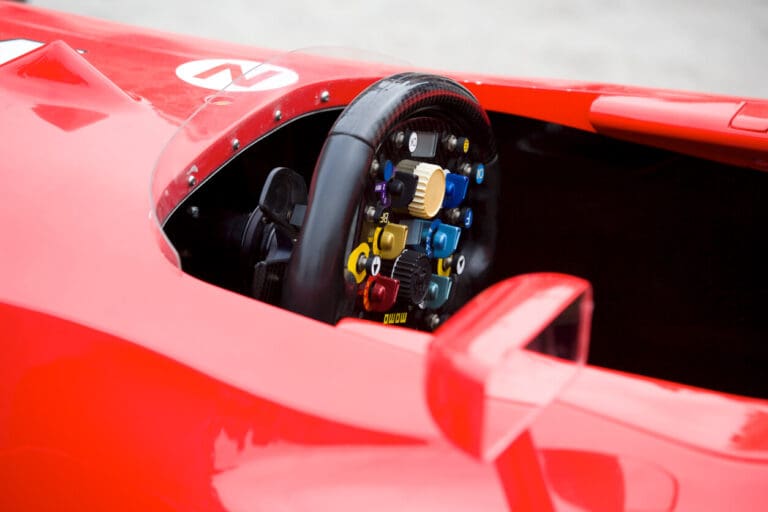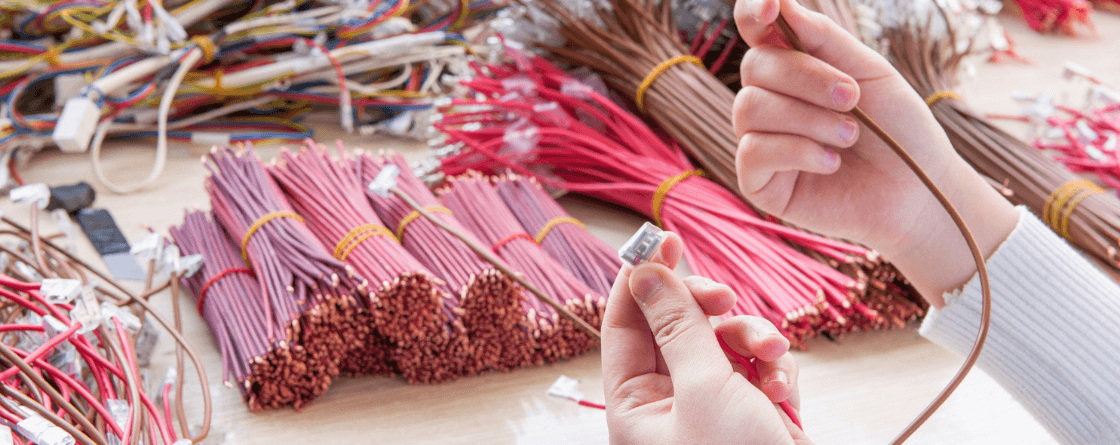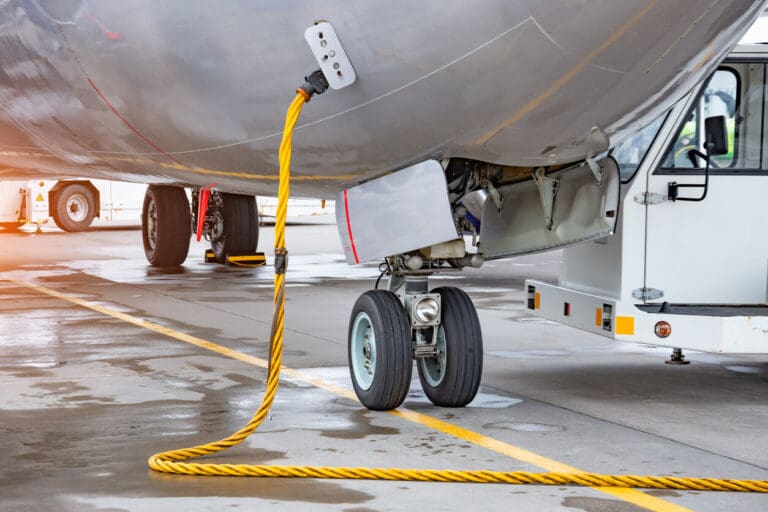
Are Motorsport Cables the Hidden Upgrade Behind Faster Lap Times?
Motorsport teams chase marginal gains in every area of the car, yet many still treat...
Read More
Keeping complex systems online takes more than parts and datasheets. It takes cable assembly manufacturers with the right processes, materials, and test regimes for the environment the product will live in. This guide gives a sector‑by‑sector view of who relies on specialist builds and what each industry typically expects from a qualified supplier, written from a shop‑floor perspective.
Auditors look for airworthy paperwork and traceable test results. If it isn’t in the pack, it didn’t happen.
Aircraft platforms, mission systems, C2/C4ISR, UAVs, and ground support equipment all rely on lightweight, vibration-tolerant looms and assemblies. Buyers typically expect an aerospace QMS (AS9100 Rev D) and workmanship to IPC/WHMA-A-620 (current revision).
Experienced manufacturers provide complete traceability, controlled change, and documented testing from prototype through to flight hardware. Compliance with customer-specified NASA/ESA documentation. Ensure all builds and test records align with programme-level documentation standards and reference requirements.
Rigorous cleaning and stage approvals. Conduct cleaning, inspection, and stage approvals in line with your detailed Standard Operating Procedure (SOP) to maintain cleanliness levels and assembly integrity suitable for aerospace and defence applications. Discuss aerospace builds via aerospace and defence.
What to ask for: Ask for AS9100 Rev D and configuration control on drawings/BOMs, workmanship to IPC/WHMA‑A‑620 (current revision), and environmental notes captured in the build record (EMI/EMC, temperature, fluids, vibration). Ask the supplier to save end‑of‑line continuity, insulation resistance and hi‑pot results to each assembly’s serial number, with the test equipment ID and calibration due date on the report.
Review enclosure builds in boxes, panels & looms.
Verify fire safety and IP at the assembled unit. Do not inherit ratings from components.
Rolling stock, signalling, and wayside systems demand fire‑safe materials and rugged assembly design. Expect EN 45545‑2 materials, ingress protection validated at the assembled unit (not assumed from the connector alone), and serviceable looms built for long life. Choose Cable Assembly Manufacturers who can prove material conformity and solid record keeping for periodic audits. Explore rail‑grade assemblies via our rail sector page.
For procurement, request EN 45545 evidence (material certificates and hazard level), confirm pull‑test plans and labelled conductors for maintenance, and ask for ingress‑protection validation at the assembly post‑build where required.
Most returns trace to dirty end‑faces; inspection to IEC 61300‑3‑35 stops that at source.
High‑density fibre, MPO/MTP trunks, and pre‑terms power the backbone. Here, end‑face quality and test evidence make the difference. Look for OLTS (IL/RL) and OTDR traces tied to serial numbers, inspection to IEC 61300‑3‑35, and a clear labelling scheme (panel, port and floor tile) that supports fast moves, adds and changes (MACs). Experienced partners also help with cleaning protocols and repair/swap cycles. See options under fibre‑optic solutions and sector context in telecoms.
What to ask for: Specify IL/RL results and OTDR traces with event tables saved to serial numbers, visual inspection to IEC 61300‑3‑35 documented per batch, and patch and label schemes that support MACs.
Need parts as well as builds? MTP/MPO trunks, patch leads and cleaning kits live in Fibre‑optic solutions.
DHF/DMR alignment saves weeks in verification when a single note changes.
From patient‑connected cables to instrument harnesses, medical assemblies require stringent process control and documented evidence. ISO 13485 is the norm for medical QMS; you’ll want biocompatible materials where applicable and documented cleanliness/ESD handling. Experienced Cable Assembly Manufacturers align DHF/DMR paperwork with your device lifecycle and can mirror your document controls during development and verification. For platform‑agnostic product context, see products.
Look for ISO 13485 certification or robust alignment, full lot traceability with cleanliness statements where relevant, and end‑of‑line electrical testing with logs linked to serial numbers.
Browse platform harness options under products.
Crimp‑force monitoring catches intermittent faults long before they reach the loom.
Production vehicles and race programmes need harnesses that withstand heat, fluids, and constant vibration, with rapid engineering change between events or model years. Reputable Cable Assembly Manufacturers align to IATF 16949 for automotive QMS and can provide evidence of lot traceability and PPAP‑style documentation when requested. Trackside experience matters for fast turnarounds. See motorsport.
Confirm IATF 16949 alignment or certification with defined sample plans. Ask for evidence of crimp‑force monitoring and pull‑test data, end‑of‑line electrical testing, and materials suited to heat and chemicals with appropriate strain‑relief hardware.
On rotating axes, torsion rating matters more than bend radius.
Robots, cobots and motion systems stress cables through millions of cycles. Harnesses need flex‑rated jacket compounds, reinforced strain relief, and bend‑radius‑aware routing. Experienced Cable Assembly Manufacturers advise on drag‑chain cables, torsion ratings, and connector retention hardware and provide cycle test data where needed. Explore capability via robotics.
Ask for flex‑life and torsion test evidence from the cable OEM or in‑house rigs. Favour field‑serviceable designs using modular sub‑assemblies to reduce downtime, with clear labelling and wear‑part spares kits.
Mixed‑metal terminations need a galvanic plan or corrosion will rewrite your schedule.
Navigation, sonar, and topside/subsea systems depend on corrosion‑resistant materials and sealed terminations. Teams commonly use pressure‑balanced or potted designs offshore. Select Cable Assembly Manufacturers who can demonstrate salt‑spray performance, ingress testing, and material selection for hydrocarbons where applicable. See marine for sector specifics.
Seek IP‑rated assemblies validated post‑build. Request material certificates plus galvanic‑compatibility plans for mixed metals, and pressure or immersion test evidence where specified.
Labelled pre‑terms and clear documentation cut MTTR on towers and in substations.
Wind (on/offshore), solar, storage, and grid assets need interconnects that tolerate UV, temperature swings, and moisture over long lifecycles. In substations and turbines, labelled, replaceable pre‑terminated kits speed maintenance and reduce MTTR. The right Cable Assembly Manufacturers design for serviceability and support spares strategies. Browse products for platform options.
For procurement, ask for environmental‑testing evidence (thermal cycling, humidity, UV exposure). Ensure clear labelling and documentation packs support field swaps and specify corrosion‑ and UV‑resistant materials with verified ratings.
Rugged strain relief beats “just one more coil” on OB days.
Cameras, OB trucks, studios, and stadiums rely on rugged SMPTE/SDI, hybrid fibre, and power looms that can be deployed and recoiled repeatedly. You need abrasion‑resistant jackets, reliable strain relief, and easy‑ID labelling. Cable Assembly Manufacturers with broadcast experience can also pre‑stage patching and provide cleaning/inspection reports for fibre. See broadcast.
Request pull‑test sampling with bend‑radius guidance for field use. Where fibre is used, ask for end‑face inspection reports. Insist on robust strain‑relief schemes for frequent handling.
Find hybrid SMPTE fibre and deployable patching in fibre‑optic solutions; rack builds show under boxes, panels & looms.
Outgassing and materials data are gate checks before anything flies.
Harnesses for spacecraft, ground stations, and satellite terminals require low‑outgassing materials, radiation considerations (where applicable), and extreme reliability. Expect AS9100, tight process control, and 100% verification testing where your specification demands it; review the verification plan before placing a PO. Work with Cable Assembly Manufacturers who understand derating, routing clearances, and documentation for flight acceptance. Explore satellite for context.
Find RF patching and pigtails in coax cables & wires.
Need parts as well as builds? GEM’s catalogue covers the common building blocks such as fibre assemblies and trunks, coax and RF leads, connector sets and crimp tools, plus finished boxes, panels and looms. If your project needs something bespoke, it rolls into bespoke cable assemblies with the same test and documentation options.
Start with a no‑obligation review. Send your drawing pack and acceptance criteria, and we’ll confirm feasibility and outline next steps. Contact us or explore products and shortlist what fits your environment.

Motorsport teams chase marginal gains in every area of the car, yet many still treat...
Read More
The wiring harness is a high-risk single point of failure in any complex system. If...
Read More
The wiring harness is the highest risk, lowest profile element in flight-critical infrastructure. When your...
Read MoreReady to talk cables, fibre or full network solutions? Get in touch with our team today, we’re here to help.